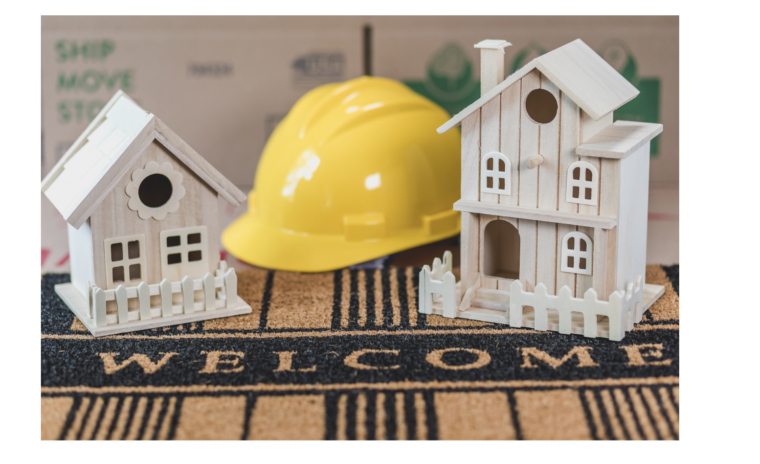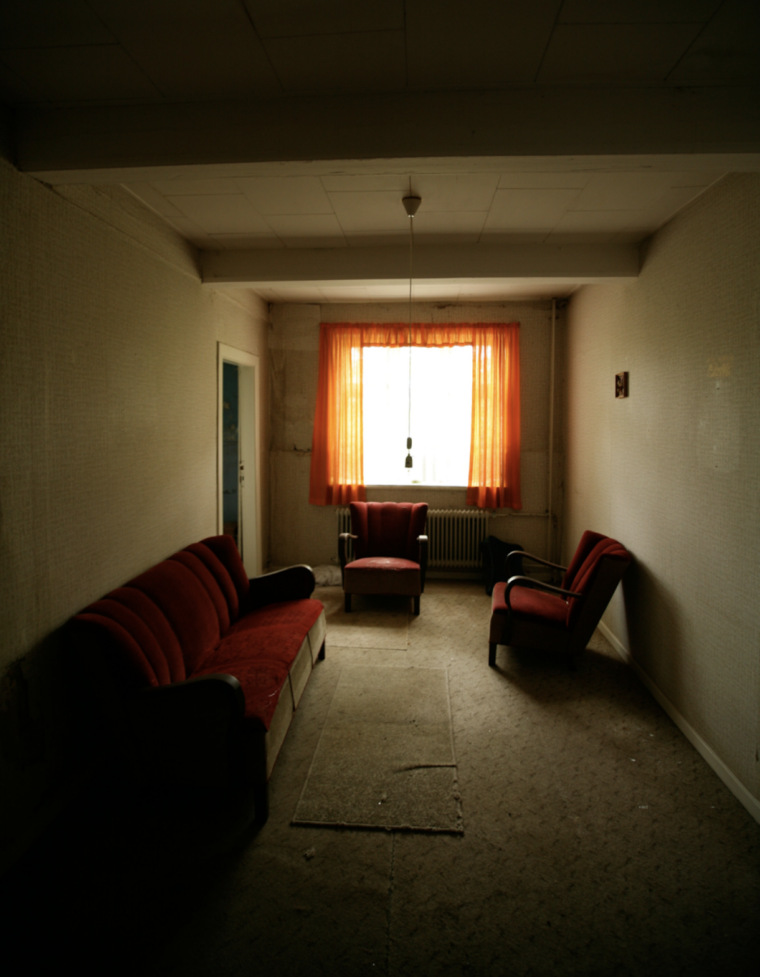8 Common Red Flags to Look Out for During a Building and Pest Inspection
Introduction to the importance of building and pest inspections.
Are you buying a new home? Congrats! While the hunt for your dream home may be exciting, there are still steps along the way to ensure that it is safe and sound. A building and pest inspection is one of these critical steps — arguably one of the most important. To protect yourself from additional unexpected costs, use this pre-purchase checklist with all its tips as a reference during your inspection. This guide will provide detailed pointers on some common red flags to look out for when visiting a property before purchase, so get ready to take notes!
Common Red Flags during Building and pest inspections
1. Lack of Maintenance or Visible Signs of Neglect.
Cracks in your foundation can be particularly alarming as they signify structural issues that demand immediate attention. If left unattended, these cracks can compromise the stability of the entire building. Identifying and addressing these issues during a building inspection is crucial for maintaining the integrity and safety of the structure.
During a building inspection, one of the common red flags is the lack of maintenance or visible signs of neglect. This can be an indicative sign of underlying issues that may need immediate attention. Signs of neglect can include cracked walls, peeling paint, sagging ceilings or floors, water stains, or mould growth. These signs suggest that proper upkeep and repairs have not been carried out regularly. Neglecting maintenance can lead to more serious problems, such as structural damage, pest infestation, or compromised safety features. It is crucial to address these issues promptly to prevent further deterioration and potential hazards. A professional inspector will thoroughly assess these visible signs of neglect during an after building inspection report and provide recommendations for remedial actions needed to maintain the integrity and habitability of the building.
2. Evidence of Water Damage or Leaks
This issue can severely affect a property’s structural integrity and overall condition. Indications of water damage may include visible staining or discolouration on walls, ceilings, or flooring and warped or buckling surfaces. The presence of mould or mildew is also concerning as it suggests ongoing moisture intrusion and potential health hazards. Such damages can result from leaky roofs, plumbing issues, poor drainage systems, or faulty waterproofing. Moreover, if left unaddressed, water damage can lead to rotting woodwork, including beams and supports, compromising the stability of the entire structure. As professionals conducting inspections must provide thorough assessments to ensure clients’ safety and property investments, identifying any signs of water damage should prompt further investigation and adequate remediation measures.
3. Presence of Pests, such as Termites or Rodents
Termites are particularly concerning as they can cause extensive damage to structures, compromising their structural integrity. A professional inspector will meticulously examine key areas of a property prone to termite infestation, including wood structures, crawlspaces, and basements. Signs of termite activity may include mud tunnels on walls or wooden beams, hollow-sounding timber when tapped or pressed, discarded wings near windowsills or entry points, or visible white ant-like insects. Similarly, pest inspection reports discovering rodent droppings, gnaw marks on furniture or cables, and burrows in insulation or crawlspaces can indicate a potential rodent problem that could lead to structural damage and health hazards due to contamination. Professional inspectors work diligently during these inspections to accurately identify and report any signs of pests, enabling prospective buyers to make informed decisions about the property’s condition and necessary remedial actions. For comprehensive pest management, consider Naples pest control by Turner to ensure your property remains safe and pest-free.
4. Structural Issues, including Cracks or Uneven Floors
These issues could indicate underlying problems that require immediate attention. Cracks found in the walls or foundation may suggest poor construction, ground movement, or periods of excessive moisture. Furthermore, an uneven floor might indicate structural settlement or damage to the foundation. It is essential to address these concerns promptly, as they can lead to significant safety hazards and expensive repairs if left unattended. A professional inspector will thoroughly assess the severity and extent of any cracks or irregularities and provide expert advice on the necessary steps to rectify the situation. They may recommend further investigation from a qualified structural engineer for a more detailed analysis. By carefully evaluating and addressing these red flags during a building and pest inspection, property buyers can ensure their investment remains secure with minimal risk of future complications.
5. Electrical Problems, such as Outdated Wiring or Faulty Outlets
Outdated wiring poses significant safety risks and can lead to electrical fires or hazardous situations within the property. These issues are particularly concerning as they may not be immediately visible but can cause serious damage over time. Additionally, faulty electrical systems can compromise appliances’ functionality and interrupt a building’s daily operations. A professional inspector will meticulously examine the electrical components of a property, assessing if there are any exposed wires, worn-out insulation, or signs of overheating. They will also check for proper grounding, ensuring all circuits have been installed correctly. With these assessments in place, an informed decision about the condition of the property’s electrical system can be made, providing valuable insights to potential buyers or sellers before proceeding further with their real estate transactions.
6. Signs of Mould or Mildew Growth
The mould or mildew growth should be treated as a major red flag due to its potential health hazards and the underlying structural issues it may indicate. Mould infestations commonly occur in areas with high humidity or poor ventilation, such as bathrooms, basements, or crawl spaces. The inspector’s keen eye should detect musty odours and visible signs of fuzzy patches or discolouration on walls, ceilings, or flooring surfaces. Furthermore, professionals should conduct moisture level tests to identify hidden sources of moisture that may contribute to mould growth. It is crucial to address these issues promptly, as mould can cause respiratory problems, allergic reactions, and even serious infections. Additionally, its presence indicates potential water leaks or inadequate insulation within the structure that must be addressed to prevent further damage. Therefore, extreme diligence is required during a building and pest inspection to accurately identify any signs of mould growth.
7. Inadequate Insulation or Ventilation in the Property
Insufficient insulation can lead to various issues, including discomfort for occupants, increased energy bills, and potential damage to the structure. Inadequate ventilation, on the other hand, can result in poor air quality, which may lead to health problems and the accumulation of moisture that promotes mould growth. Both scenarios compromise the comfort and well-being of occupants, potentially impacting their financial investment in the property. A professional inspector should thoroughly assess these aspects by examining insulation materials, checking for proper installation techniques, measuring ventilation rates, and analyzing signs of condensation or excessive humidity levels. Addressing such red flags during an inspection helps ensure buyers are well-informed about potential risks and allows them to negotiate repairs or reconsider their purchase decision accordingly.
8. Inadequate Security Measures, such as Broken Locks or Windows
While it may seem minor to some, it can signify larger problems. Broken locks or windows can invite potential intruders or pests to gain easy access to the property. Additionally, it raises concerns about the overall maintenance and care of the building. If something as basic as a lock hasn’t been addressed, it leaves room for doubt regarding other crucial aspects of the property’s upkeep. Addressing these issues promptly is essential as they can compromise the occupants’ and their belongings’ safety and security. So, if you encounter broken locks or windows during an inspection, consider it a significant red flag, signalling possible negligence by the past or current owner or lack of attention to important details in maintaining the property’s integrity.
Conclusion emphasizing the importance of thorough building and pest inspections.
In conclusion, investing in a building and pest inspection should be considered when considering a new space. It’s a necessary step that will save you from lots of potential headaches down the line. Making sure pests and any old or potentially hazardous materials are taken care of can help create a safe and healthy environment for you and your friends and other family members.
Furthermore, having an inspector’s full inspection report somewhere to refer back to is often necessary when selling or buying a property. If you’re based in Brisbane, finding someone specialising in Building and Pest Brisbane inspections pays. This way, you know you’re working with certified professionals who take their work seriously. Don’t take the risk – do what’s best for your property today!

FAQs
How important is having a professional building and pest inspection before purchasing a property?
This process ensures that buyers are well informed about the condition of the building, uncovering any hidden issues or potential pitfalls that may require costly repairs in the future. A professional inspector examines various aspects of the property, including its structural integrity, electrical wiring, plumbing systems, and other essential components.
Moreover, they assess for any presence of pests, such as termites or rodents, that can cause significant physical abuse or damage if left untreated. By investing in a thorough inspection, prospective buyers can make informed decisions and negotiate fair prices based on accurate evaluations. Failing to conduct a professional assessment may expose them to serious financial risks and potential health hazards associated with structural damages or pest infestations.
Therefore, obtaining a comprehensive building inspection report is recommended and imperative for anyone planning to purchase property to ensure sound investments and future peace of mind.
What are some signs of termite infestation that should be considered as red flags?
Termite infestation can cause severe damage to structures if not detected and addressed early on. Several warning signs can serve as red flags for termite activity, allowing homeowners to take prompt action. One such indicator is swarming termites, commonly seen during springtime when reproductive termites emerge from their colonies to mate.
Additionally, frass or termite droppings resemble small wood-coloured pellets that can accumulate in and around infested areas like windowsills or furniture. Visible mud tubes, often found along walls or foundations, protect termites travelling between their underground nests and food sources above ground. Hollow-sounding timber or sagging floors may suggest extensive damage caused by termite feeding.
Furthermore, discarded wings near light sources indicate a recent swarm event nearby. By recognizing these telltale signs of termite infestation and promptly contacting professional pest control services, property owners can safeguard their personal space and their investments from potential destruction inflicted by these silent invaders.
Are there any specific areas or parts of a building that commonly have issues and should be closely examined during an inspection?
Regarding buildings, certain areas or parts commonly experience issues and thus require close monitoring. The foundation is the backbone or support of any structure and is susceptible to problems such as cracks, settlement, or water infiltration.
Also, electrical systems should be closely examined due to potential hazards like faulty wiring or overloaded circuits that can lead to fire risks. Plumbing systems demand scrutiny, too, as leaks or blockages may cause significant damage and mold growth while compromising the building’s integrity. HVAC systems play a crucial role in maintaining comfortable indoor environments but often face issues related to poor air quality, inadequate ventilation, or malfunctioning equipment. Roofs need regular inspection for signs of wear and tear, such as loose shingles or membrane deterioration that may result in leaks and water damage.
Lastly, aging exteriors can deteriorate due to weather conditions; therefore, meticulous attention is necessary to identify and rectify any structural weaknesses promptly.
Autobiography
Jim Pulman has extensive knowledge and experience in Home Building, Construction, and Design. He writes articles in his free time and partners with content creators to share his expertise with the online community

